Brett
Rants
Monet
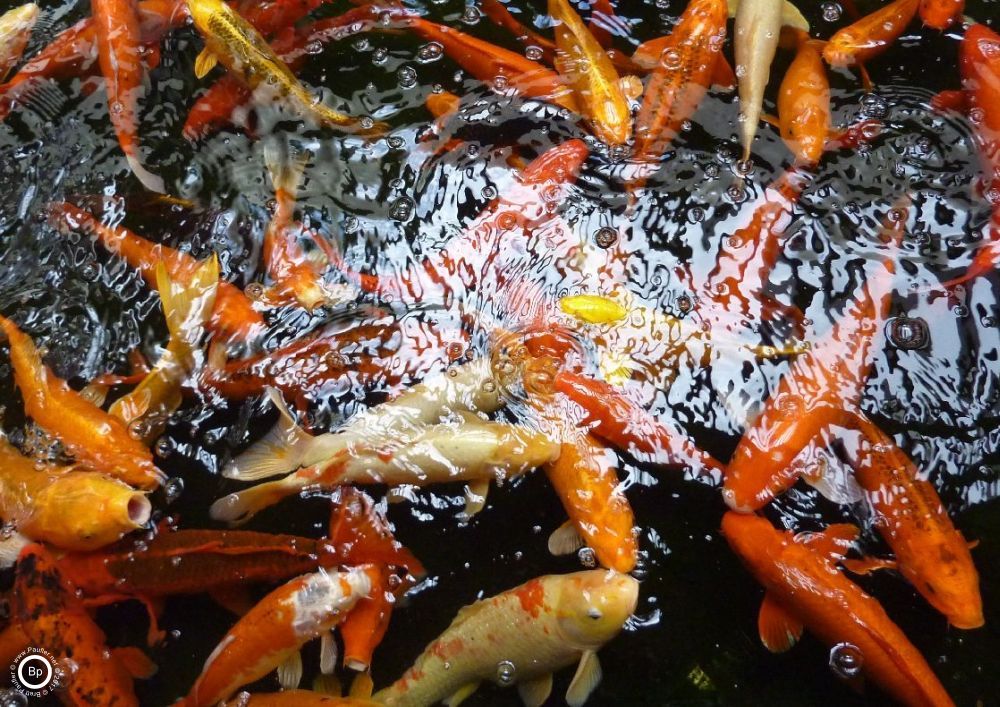
Now that's what I call colour!
Koi!
In the right culture, Monet would have painted brightly coloured fish... or maybe I'm thinking about Renoir?
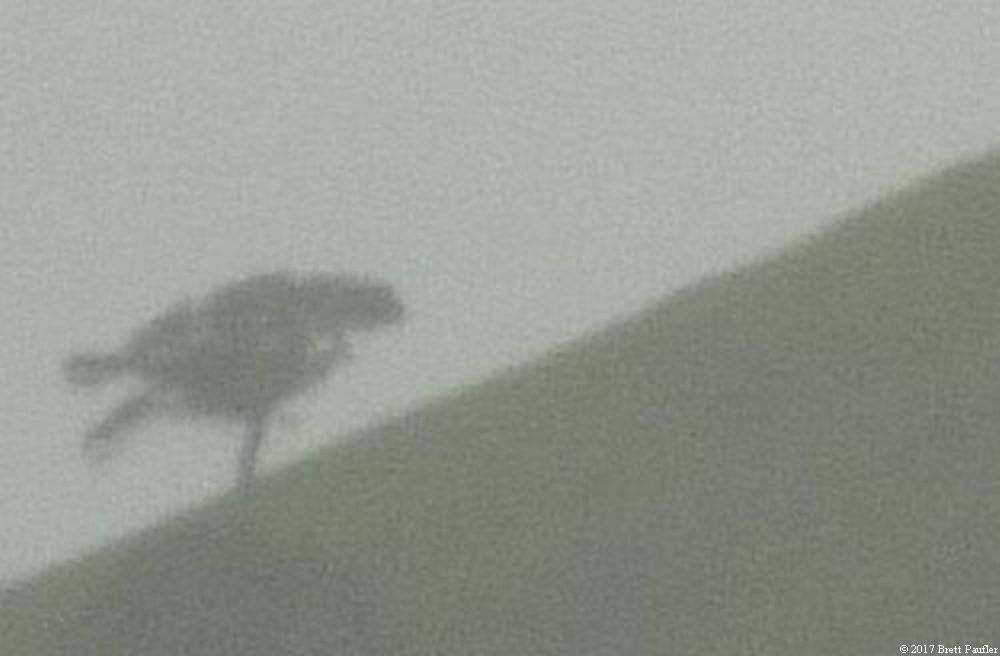
Tree in Fog
Monet in Three Easy Lessons
I like putting together strings of nonsense. When in the mood, I can just let 'er rip, pulling ideas out of thin air. Thus (and in short), I am an amazingly versatile Art Critic (if I do say so myself, which most Art Critics do; so, there you are, my qualifications complete). As such, you (or a discerning reader if this is not you) might want to take whatever I have to say (on pretty much whatever topic I may be espousing at the moment) with a grain of salt.
But enough with the disclaimers.
After studying the matter for a mere 24 hours (call it a day, so we are talking about an in depth study, here), I have come to the following conclusions concerning Monet (an artist who's paint brushes I am likely not worthy to clean; but then, I've never let a little fact like that stop me before, so why start now).
Monet's Art was all about:
And pretty much in that order.
And then, of course, because this is a rant, things that have precious little to do with Monet are discussed in depth towards the end. But we'll get to that soon enough.
Water

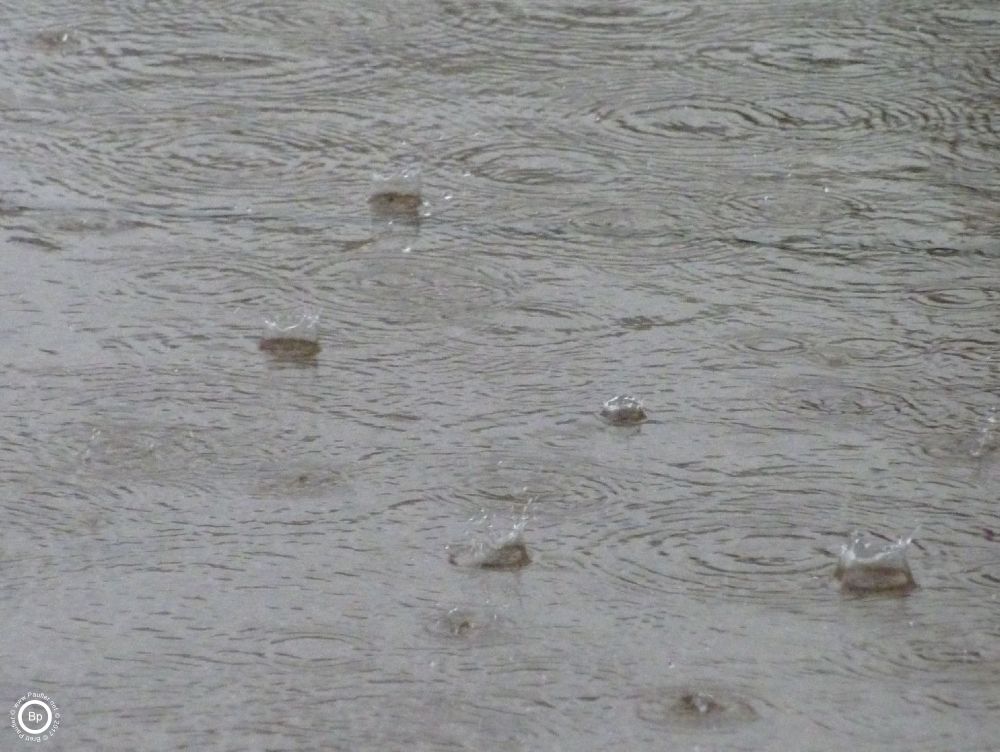
Drops of Rain
A Series in Two Parts
In my opinion, first and foremost what Monet desired to accomplish with his art was to Capture the Ephemeral. Boudin, his first teacher (and perhaps the man who 'discovered' Monet) was a Sea Scape Artist. Boudin knew how to draw waves. And this gift, I believe, was passed on to Monet, who transferred this ability to capture liquid's effervescence (whatever that's supposed to mean) into ever subtler modes of expression, including (but not limited to and certainly in no particular order):
Pursuing a watery theme, Monet painted:
- The Ocean
- This one should be obvious.
- Rivers
- Fields of Grass and Poppies
- Think of it as an 'Ocean of Flowers'.
- Smoke, Clouds, & Fog
- Are all variations of water in the sky.
- Sure, maybe I'm stretching. But where's the fun in a thesis that sticks to familiar ground?
- And examples of this last class include his paintings of the Towers of Parliament and Steam Locomotives (just to name a few).
- Water Lilies
- Water Lilies is the logical conclusion of this progression: a field of flowers floating on water with the clouds and the sky reflected therein. But that is not all, topping off this conceptual masterpiece, each water lily contains a pool of water within which cascades the aforementioned reflections, as well (or so I would have you believe).
I like to kid that the Haystacks carry on this theme in reverse (the dessication of grass, stripped from the field); but even I know this is going too far.
Or does it?
Who knows the mind of another.
Certainly, Monet toyed with painting heat waves in the afternoon sun. And if one is going to do that, why not try to paint the rain (as he most certainly did) or how a field of grass might look as viewed with tears in one's eyes (or am I just repeating the Haystack theme once again)?
Continuing on, I've seen his attempts at snow on a field, the morning dew... and a scarf in the wind blowing across a face: all variations on a theme.
Not that I believe Monet attempted this last, but I will close this section with a simple query.
How does one paint music?
The silence of fog?
Or the simple patter of falling rain?
Colour
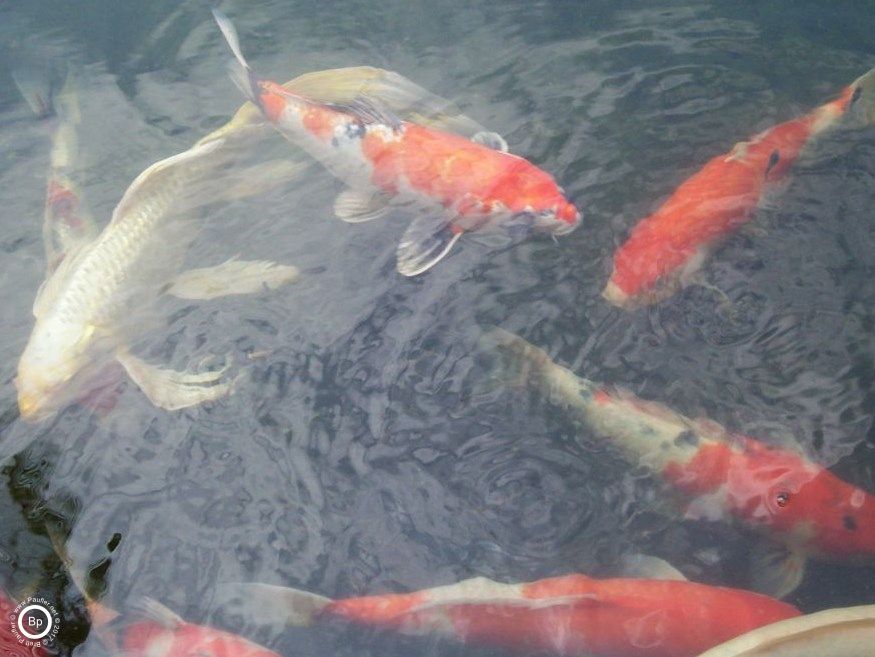
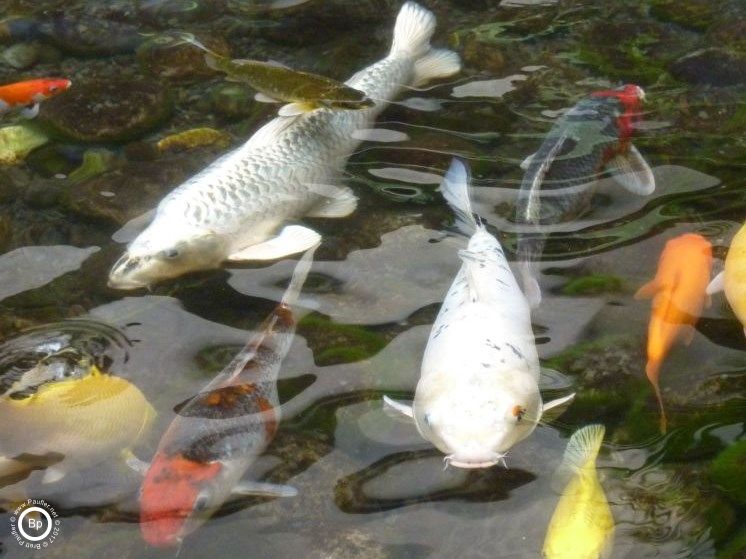
Flocks of Frosted Fish
Monet was an Impressionist. And it is possible the Impressionists would not have existed as a class (or, perhaps, not in the same time and place: Late 19th Century France) if it had not been for two technical breakthroughs.
- Better Paint Colours
- which made Monet's vivid pastels possible
- and likely reduced the cost of certain colours; and
- Paint Tubes
- which allowed paint to be easily stored
- which, owing to to this newfound logistical ease, must have, also, reduced their cost,
- but more importantly made Plein Air Painting (a mainstay of the Impressionist Ethos) much-much easier.
Um, is that clear? Over the course of the 19th Century the palette of paint pigments essentially doubled (from like ten standard colours to something on the order of twenty), allowing more and varied colours (you know, like almost exactly ten additional base colours became widely available). Who knows (certainly not I) how hard it would have been to paint those soothing Pastel SkyScapes (that Monet is so famous for) a mere fifty years earlier (certainly, for Monet, having not yet been born, this would have been nothing short of miraculous; made all the harder, of course, without all those newfangled paint pigments).
And then, let's not forget that whole Paint Tube thingie. Paint became cheaper as the forces of mass production were brought to bear. And it was suddenly possible (though, one questions the wisdom of doing this) to carry all the paint one might need for the day in their pockets (or you know, a little case, perhaps along with a sandwich in case one got a wee bit peckish). More specifically, previously artists had worked with only a few colours at any one time (say, green and blue on one day and brown and black the next). But with cheap paint, it became feasible to open the lot and paint with, say, a dozen different colours at all once (and dash-darn the expense, because there is no expense).
And here I will insert an odd bit of trivia. Monet (I hear tell) only used nine colours for some (many, all) of his paintings.
Anyhow, technology, it marches on; and one of the results was Impressionism.
Luck

Not all flowers are destined for greatness...
In attaining Super Stardom, there is always an aspect of luck. Yes, Monet followed his muse and painted as he would. And this was something he controlled completely. But the reaction of others, his success in the wider world, was completely out of his control. And might as well be attributed to luck, being in the right place at the right time, or what have you.
But as we all know, one can 'make' their own luck. So, what might that look like?
- Monet was prolific.
- I liken this in some ways to buying a lot of lottery tickets or using more than one pole when fishing.
- Monet made plenty of pictures, several of the same thing (often at the same time, and even more) often of whatever was right outside his hotel window.
- So, I think it's fair to say, Monet spent far more time painting than thinking about what to paint.
- He made a series of paintings of the same haystack (25 +/-), which on the whole is a rather boring subject. He did many series of this sort.
- Monet was collectable.
- The Salon, in which Monet achieved limited success, was a government backed institution.
- But in the art world, the influence of governments and religions was on the wane.
- Private collectors were on the rise.
- A single rich patron bought a third (10 or so) of Monet's haystacks (in a sense, making a market for the series). And in the end, I am told she made a profit.
So, in a collector's boom, Monet was immenintly collectable.
On the Edge of Abstraction

Nature's Abstraction
Note: this is where the rant (perhaps, just perhaps) goes off the rails a wee tiny bit.
Many of Monet's contemporaries thought his work was crap. And much of Modern Art (and/or Contemporary Art, you'll forgive me if I'm not up enough on the lingo enough to adequately distinguish between the two) is, also, in my ever so humble opinion, complete and utter crap. So, why would anyone ever deal in crap or that which so many folks thought was crap?
Well...
- No one knows what the Next Big Thing will be.
- If anyone knew what the Next Big Thing would be, they could discern hit from flop before the fact and become wildly wealthy in the process (buying before prices sky rocket, while selling at the peak of popularity).
- So, trust me on this, no one knows. Not now. Not in Monet's day. Not ever.
- It's hard to stay ahead of the wave.
- Salons, collectors, and museums all want to stay ahead of the wave, but no one knows what the Next Big Thing will be.
- Once enough critics, collectors, and/or curators agree as to what they believe the Next Big Thing will be that thing becomes the Next Big Thing by virtue of these expert's collective beliefs.
- So, to become the Next Big Thing, all one must do is first become perceived as the Next Big Thing by the right subset of folks (this tends to differ with each wave) and success will follow just as surely as Night follows Day.
- The search for the Next Big Thing is always driven by scarcity.
- I like Monet. I will search him out. But there are only so many Monet's around, because, you know, when he died, production of Monet's sort of came to a screeching halt.
- Since I will search Monet's out, but they are expensive, museums, collectors, and the like are busy searching for substitutes.
- These substitutes are usually inferior... unless they happen to become the Next Big Thing in their own right.
- But galleries and museums must fill their walls, so they take what they can get, creating demand for the Next Big Thing in the process.
- It's very circular.
- Anyone can become the Next Big Thing if only enough museums display, galleries sell, and collectors buy their work.
The Salon would not show Monet's work. Modern Art Museums will not show mine. Coincidence, I think not. Consider the following artistic pieces. Being Conceptual, they are 'complete' as shown, which is to say, as written herein (with only that 'display', 'buy', and 'sell' part to be worked out later).
- Scratch Monet
- In which the artist (presumably me), proposes buying priceless works of antiquity, scratching off the original artist's name, and writing in his own name in bright Day-Glo marker.
- Found Art is so passée. This is Bought Art. Welcome to the Next Wave.
- Art Fair
- There's a lot (as in, a Sh!t Load and/or a F#ck Ton, please choose the expletive that you think works best) of fantastic amateur art out there, which nearly every school (be it an art, high, or whatever sort of school) displays on a regular basis. Most of these pieces can be had for under $100. Buy them. Display them. Sell at $10,000 a pop for a hefty 100x (that's a 10,000%) profit.
- What the artiste does in this piece is make commentary on the Consumer Capitalist system which Exploits the Worker... yada-yada.
- Or in other words, why be an Artist when you can be a Curator?
- Urination in the Corner
- Much like the ubiquitous Gorilla in the Room, Urination in the Corner takes art criticism to the next level, that of bodily functions.
- Clearly an installation piece. The artist is available for monthly bookings, during which time he will consume a pallet of bottled water. The companion pieces, Empty Plastic Bottles Rolling Everywhere and Creating a Tripping Hazard will be recycled at the end of the exhibit.
- There is much anticipation for the artists follow up work: Defecation in the Middle of the Room, accompanied, of course, by Baked Bean Burner Blow-out (for Health and Safety reasons, industrial grade ventilation will be required prior to commencing work on this piece). Institutions interested in hosting the exhibit are urged to contact the artist directly.
Um, yeah. So maybe that should have been two posts... or maybe my feelings towards certain aspects of Modern Art are exactly in sync with some of Monet's contemporaries.
Art: Most Artists Don't Even Know It When They See It
And by and large, the same can be said of the reading public vis a vie Great Rants.
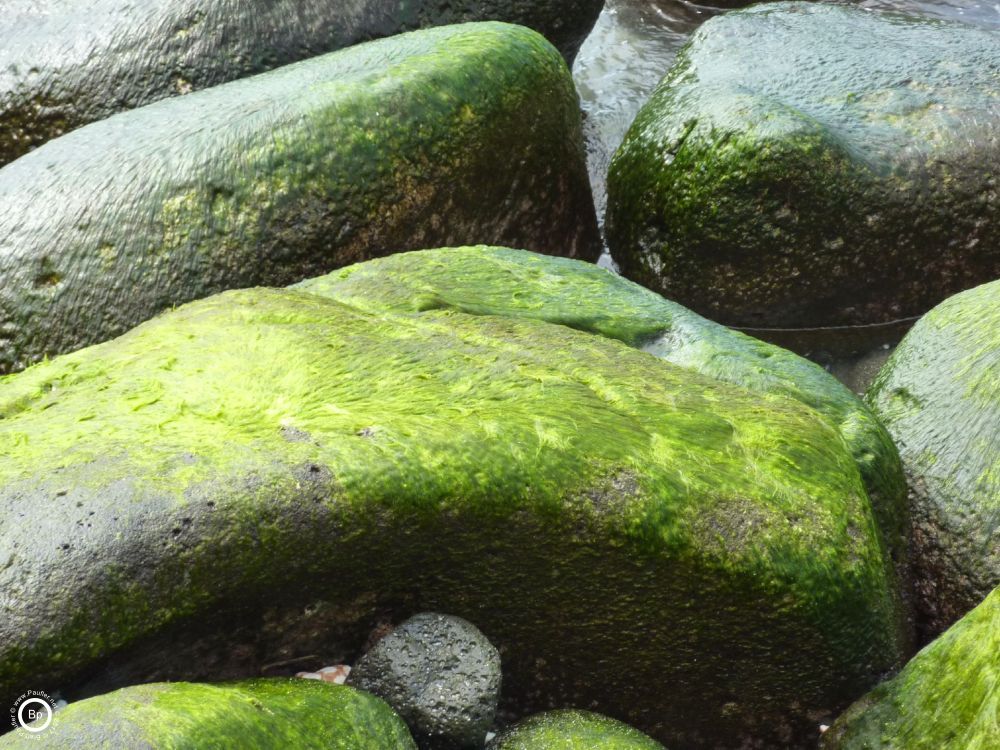
Moss on Rocks at the Seashore
The Last in a Series by Brett
next
Brett
Rants
entry
Home
Brett
Rants
Index
While reading about Monet, I came across the idea that an Art Collector could 'Accomplish' things, 'Great' things in the amassing of Art which other folks (Monet in this case) had created.
Um, no. Collecting Art is no more an accomplishment than is watching a complete TV Series. It may be fun. But it's not an 'Accomplishment'.
On the other hand... and here you'll just have to imagine a link to my accompanying online store, where
Collector PDF's of this page are available.
© copyright 2017 Brett Paufler
paufler.net@gmail.com








